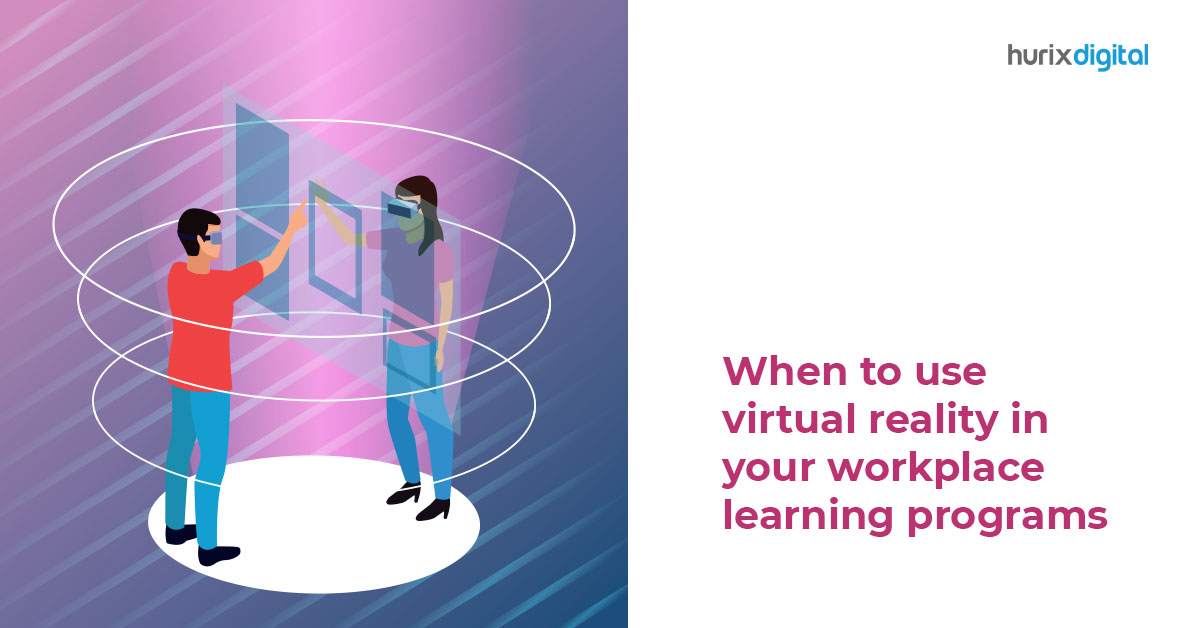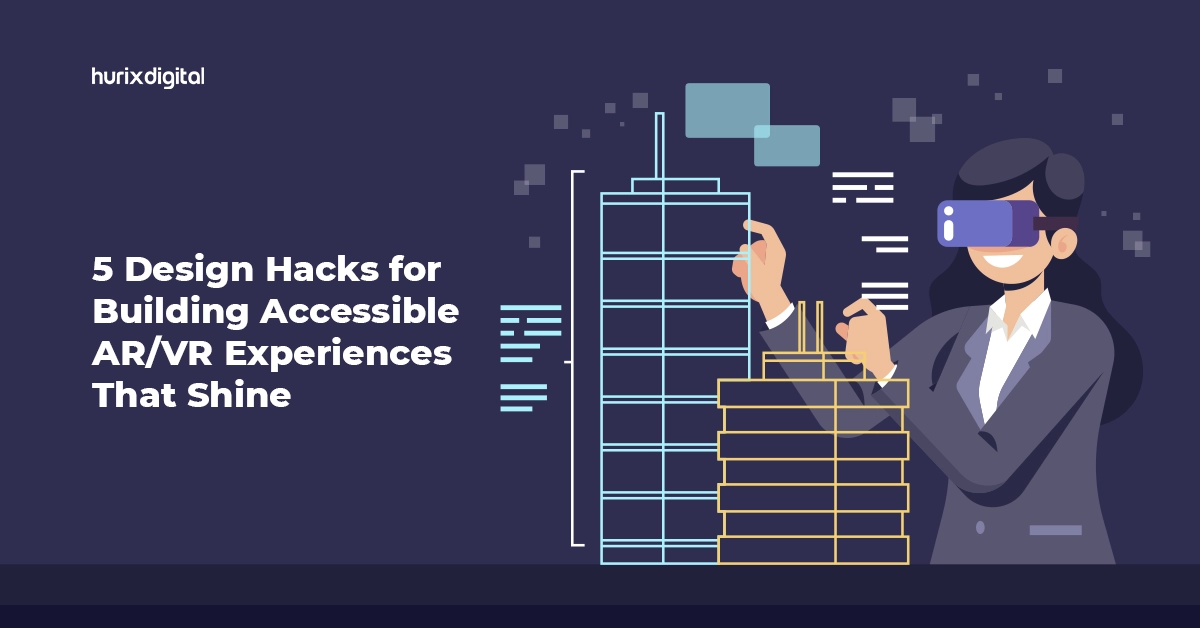
When to Use Virtual Reality in Workplace Learning Programs?
In recent years, Virtual reality (VR) has emerged as a powerful tool for workplace learning programs. Its immersive and interactive nature opens up the possibility of unique, hands-on learning experiences in virtual environments. When such learning experiences are designed well, the transfer of training to real environments becomes smooth and seamless. However, VR is not a one-size-fits-all solution, and organizations must carefully consider when and how to use VR in their workplace learning programs. In this article, we will discuss five different conditions under which VR-based learning solutions are a good fit.
5 Conditions to Use Virtual Reality in Workplace Learning Programs?
- When VR will enable better learning outcomes
- When VR will drive and not deter learner engagement
- When real training environments are hazardous
- When real training environments are expensive
- When scalability and flexibility are not critical
Condition #1: When VR will enable better learning outcomes
The ultimate goal of any workplace learning program is to improve employee performance and productivity. Organizations should consider whether VR is the most effective tool to achieve the desired learning outcomes. For instance, VR can be an effective tool for skills development, such as practicing soft skills or technical skills in a simulated environment. However, VR may not be the most effective tool for knowledge acquisition or information retention, as it may lack the interactivity and feedback of traditional classroom learning or e-learning solutions. Thus, organizations should carefully evaluate the learning outcomes they want to achieve and assess whether VR is the most appropriate tool to achieve those outcomes.
Condition #2: When VR will drive and not deter learner engagement
One of the key advantages of VR is its ability to engage learners in an immersive and interactive learning experience. VR can provide a more engaging and motivating learning experience, leading to better learning outcomes and knowledge retention. However, organizations should also consider the learners’ preferences and comfort level with VR headsets. Some learners may feel uncomfortable or disoriented in a VR environment, which can affect their learning experience. Thus, organizations should provide adequate training and support to help learners feel comfortable and confident in using VR technology.
Condition #3: When real training environments are hazardous
One of the key benefits of VR is its ability to simulate complex and high-risk scenarios that may be difficult or impossible to replicate in real life. For instance, VR can be used to train employees to carry out various tasks at chemical plants or construction sites, without exposing them to actual risks. VR can also be used to simulate complex processes, such as operating complex machinery or systems, that may be difficult to learn in traditional classroom settings. Thus, organizations should consider using VR when the task or environment is too complex or hazardous to simulate in real life.
Condition #4: When real training environments are expensive
VR can be a cost-effective solution for workplace learning programs, in specific contexts and under certain conditions. For instance, VR can provide virtual access to expensive or hard-to-access equipment, machinery, or environments that are extremely expensive to arrange for in reality. VR can also reduce the need for physical training spaces and travel expenses. When evaluating the cost-effectiveness of a VR solution for a training need, organizations should also consider the initial investment required for VR hardware and software, as well as the ongoing maintenance and support costs.
Condition #5: When scalability and flexibility are not critical
VR solutions require access to expensive hardware and software and that places some limitations on the scalability of VR learning experiences. Virtual reality (VR) based learning programs are not as scalable and flexible as other forms of digital learning, for reasons explained below.
Hardware requirements: VR-based learning programs require specialized hardware such as VR headsets and motion controllers. These hardware requirements can limit the number of users who can access the program, as not all learners may have access to the required equipment.
Design & technical skills required: Designing VR-based learning programs requires a higher level of design and technical expertise and resources. VR experiences involve the creation 3D models and immersive environments. All elements of a VR experience including the visualization, navigation, nature of instruction, learning interactions, feedback and assessment strategies have to be thought through in a different way, unlike the templatised approach of traditional eLearning methods.
Maintenance and updates: VR-based learning programs require ongoing maintenance and updates to ensure that they continue to function properly with the latest hardware and software updates. This can be time-consuming and costly, particularly if the program is used by a large number of learners.
Cost: The cost of creating and maintaining VR-based learning programs can be significantly higher than the cost of creating a simple WBT using Articulate Rise. The cost of the required hardware and software can be prohibitive, particularly for organizations with limited budgets.
In conclusion, VR can be a powerful tool for workplace learning programs, but organizations must carefully evaluate when and how to use it to achieve their desired learning outcomes.
Looking for help with deciding whether or not to go for a VR based learning program for your employees’ learning needs? Contact marketing@hurix.com for further details.

Senior Vice President
Julia brings over 20 years of global experience in digital learning and business strategy. She specializes in client success, enterprise learning solutions, and driving growth through innovation, with a focus on AI, VR, and emerging technologies across diverse industry verticals.








